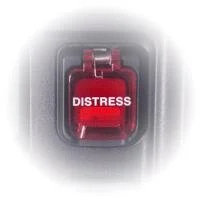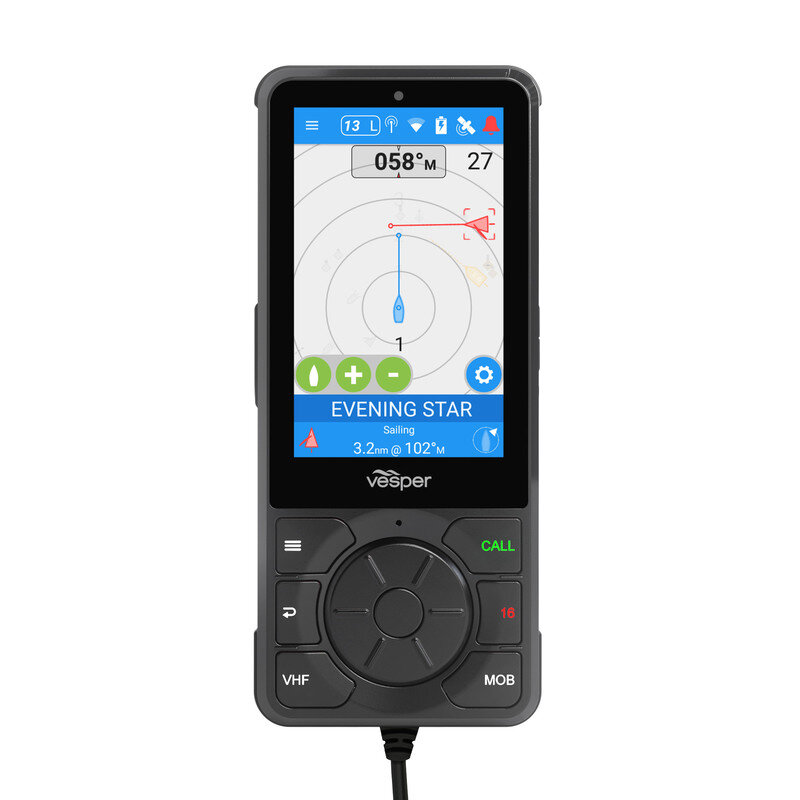It seems that large evolutions in the marine electronics industry happen in short spurts, where big gains happen only so often. The hardware contracts for manufacturing are expected to last for several years to offset the limited numbers sold in the marine market. The protocols used by marine hardware have been few, and have matured into some basic level of interoperability, but the best functionality still relies on using one brand.
Vintage Sailor RT144C Marine VHF Radio Telephone, circa 1970
In the latest line of marine navigation equipment, almost all advances in feature functionality happen at the application level. Just look at how updating the software on a navigation system brings incremental features to the ubiquitous Multi-Function Display (MFD).
We are now faced with what is probably the largest advancement in marine VHF radios in about 20 years. We all know of the mandated Digital Selective Calling (DSC) feature embedded in every radio sold. The common feature here is the red DISTRESS button on the radio. But, DSC does so much more, like messaging, position exchange, calling a station directly, changing working channels, and soon a form of short message texting. The challenge up to now has been trying to do these things from a small radio menu, or having tight integration between the radio and navigation system processor, or MFD.
Go forward in time a bit, and we have the Automatic Identification System (AIS). This technology was a direct result of the Exxon Valdez spill here in Prince William Sound, AK in 1989. The intent was for collision avoidance and security domain awareness for vessels transiting the sound. Today, any commercial vessels 65'+, taking passengers for hire, carrying hazmat, fishing boats, and a few others are required to have an AIS transponder. There are also many recreational boats that have receivers and/or transponders. These are either separate units, or bundled into the VHF unit itself. The interesting thing about AIS is that the more boats with it on while underway, the higher the safety margins for all skippers.
First camera phone introduced by Sharp, November 2000
It has been the case, in order to take advantage of these established technologies, it required messing with inputting individual MMSI identifiers for boats, or using the most basic features because of different brands of equipment on the bridge. Needless to say, this functionality has not been used to its full potential. In fact, I see several boats that don’t even have the most basic life/safety functionality of a working DSC DISTRESS function.
We are at another point in history, much like the day someone put a camera on a cell phone. Vesper Marine has introduced the Cortex V1 VHF Radio with SOTDMA smartAIS and they threw in some vessel monitoring to round out the package.
Comparisons to a cell phone are obvious, from the Gorilla glass multitouch display, to the PTT buttons on the side of the handset, the interface and the size. There is even a cordless version for portability around the boat. Now all of those kludgy ways to access DSC, VHF, AIS are gone. Now, we have direct access to these advanced features on a seemingly familiar interface.
The HUGE takeaway here is the software defined radio technology. So, just like the nav system, new feature functionality is just a simple software upgrade away. Just for comparison, how many software upgrades has your VHF radio had since it was installed? Probably few to none. The current list of features is impressive, but it's the revolutionary interface that allows seamless access to them. It will be interesting to see what other capabilities might be added in the future.
Over the last year, I have been watching the progress of this new way of looking at the one device on the boat that we use all of the time, go from a rotary dial phone type of device, to a smartphone type of device. Early on, I was questioning how I would fit it into my operation onboard. At first it didn't seem like a fit; maybe because I already have several of those features spread across the helm.
Flashback 20 years ago when I also thought I would have no use for a camera on my phone, since I already had a camera. Doh. Turns out that I take more pictures with my phone than a camera. I can now see having AIS, VHF, anchor alarm below decks, easy access to call a boat by selecting it with a touch on the radio screen, all with portability. It is the fact that those features will be easier to access and more useful in the big picture.
Excellent work by Vesper Marine on disrupting the VHF and AIS space. And, if that wasn't enough, they added a free option for their cloud monitoring service. So, this gear is definitely in a league of its own that integrates several communication, instrumentation, safety, and monitoring features in one. The Over The Air (OTA) software updates will keep it fresh for many years to come.
There are several reviews around for Cortex, and I encourage you to check them out. Of course, Polar Marine Alaska is also a dealer, but hey, it's good gear. In fact it is an evolutionary and capable new species.
Capt. Brett






